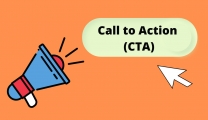I- Mistakes in the process of building enterprise competency framework
Competency framework is a system that includes the knowledge, skills, attitudes and characteristics that an employee needs to perform. Based on the competency assessment framework, the manager will have an overview of the personnel's capacity for the job requirements set out.
However, many organizations have failed in their efforts to develop a framework for proactively managing HR capabilities.
The main cause of failure is that competency frameworks are developed and implemented without a clear business purpose. There is no business purpose, no objective to base design decisions on when building the framework. The resulting design is often flawed, serves too many masters, and is discontinued after a year or two of use.
Second: A common mistake that many organizations make is confusing competence with mission. Tasks are better positioned in the job description. Frameworks that confuse tasks with competencies typically have between forty and fifty competencies described. By now each job description tends to have between twenty and thirty competencies assessed in an employee.
Third: Lack of commitment and companionship of leaders. It can be seen that, in an enterprise, the leader has the role of a pioneer, an example to help their employees learn and follow the established competency framework. If the leader is only the person who gives the framework of professional competence but does not seriously implement it, avoids evaluation meetings, it will certainly not be able to successfully implement it.
In order to build a successful competency assessment framework, not only the determination of the leader is required, but all employees need to adhere to the principles of capacity measurement to ensure fairness and transparency.

II- Structure of the competency framework model
Building a competency framework structure helps companies establish a good foundation in human resource management activities… Here are four common frameworks for each employee to successfully complete their assigned work. and develop the necessary competencies.
- Role specific competencies: Including the competencies serving specific positions in an organization such as leadership capacity, strategic thinking capacity.
- Core competencies: These are competencies that include the necessary competencies for positions such as problem-solving skills, communication skills, computer skills, etc.
- Technical competence: Includes specialized knowledge and skills to meet a specific position or field, and play an important role in the performance of the proposed professional work. For example: Programming skills, Sales skills, Data processing skills…
- Behavioral competencies: Are specific competencies of an individual defined in terms of behavior to ensure applicability and proficiency.
It can be seen that the division of many different competency framework groups will help managers identify the necessary competency criteria, avoid overlap, and evaluate human resources in a transparent and accurate way.
III- Application of competency framework to human resource activities
1. Application of competency framework in recruitment
For recruitment activities, the competency framework becomes a guiding criterion to help enterprises quickly select potential candidates. This will save the organization from having to invest essential resources in hiring individuals who lack the right skills for the job.
In addition, applying the competency framework to recruitment activities also helps managers have a comprehensive view of the candidate's strengths and weaknesses. This helps HR easily distinguish which candidates are suitable and meet the job requirements. In addition, you can refer to the recruitment support tool to help HR find the most suitable and qualified candidates.
2. Application of competency framework in personnel training
Based on the professional competency framework, managers can identify training needs and training program content to develop and change personnel. In order to effectively apply to the personnel training process, enterprises need to understand the capacity and skills of personnel to conduct regular evaluations for staff and employees.
3. Evaluate and develop employee compensation regime
In addition to the application of the competency assessment framework in recruitment and training, the professional competency framework also plays an important role in personnel evaluation, which is the basis for salary, reward and implementation of other benefits. remuneration for employees as well as management levels in the enterprise.
Managers can build a set of competency evaluation criteria to assess the level of work completion and measure the work results of employees. As a result, leaders will have a human resource policy to reward the right people, the right jobs in a transparent and accurate way.
III. 5 Steps to build an effective and easy-to-apply competency framework for companies
To build an effective competency framework that meets the actual needs of your company, you can refer to the steps shared by experienced experts below:
Step 1: Define your purpose
First, companies need to determine what the purpose of the competency framework is to serve. For example:
- Recruiting personnel
- Personnel training
- Personnel evaluation
- Developing a compensation system for employees
Depending on the different type will lead to the introduction of different types of abilities.
Step 2: Standardize the work of each department
Standardizing the organizational structure and title system will help businesses clearly define the tasks and functions of each position. Because competencies will be directly related to job performance and different activities, the clearer the organizational structure, the easier it will be to determine the appropriate competency framework to help employees complete their work.
Step 3: Identify the required competencies
Next, we need to identify the capabilities that may be needed. To determine the required capabilities, companies can refer to some of the following ways:
– Build the required set of competencies
– Group division, according to professional level
– Refer to some commonly used capacity sets in the world such as “42 competencies according to Harvard University”, “Capability sets developed by the UK’s CIPD’, etc., then you can adjust them. capabilities to suit your company needs.
Step 4: Arrange capacity for each position
Once we have a full set of competencies with levels, the next step is to determine the capacity and capacity levels for each position in the enterprise. To arrange competencies suitable for each job position, managers can use many different ways such as: making a survey, having internal discussions to get everyone's opinion to build a standard competency set.
Step 5: Evaluation
As a final step, we need to put those capacity sets into use as well as develop capacity assessment tools for each individual and department. However, this is a task that requires highly specialized people, so if businesses do not have enough expertise, they can hire experts or professional consulting units to carry out the capacity assessment.












Replies to This Discussion